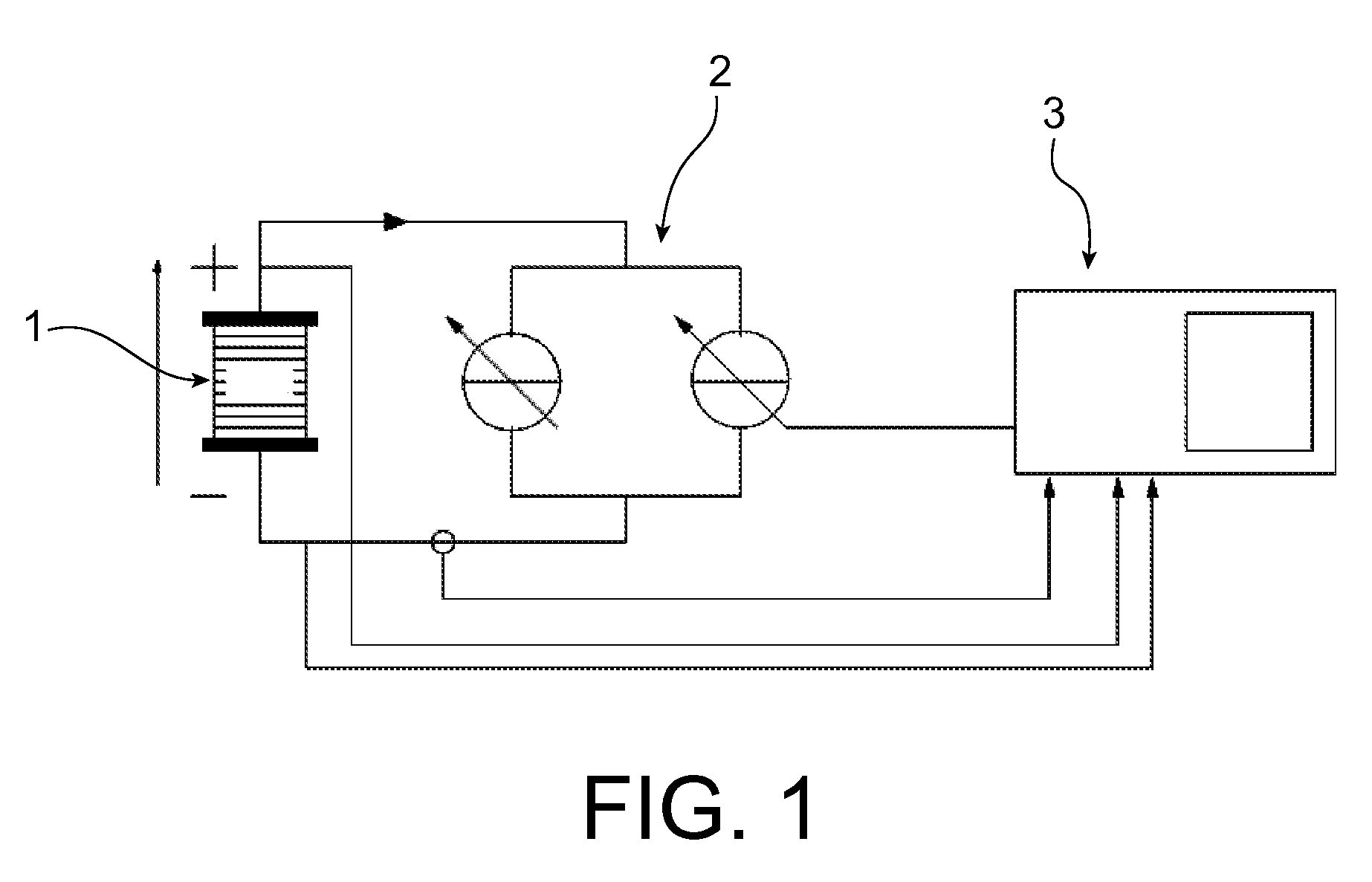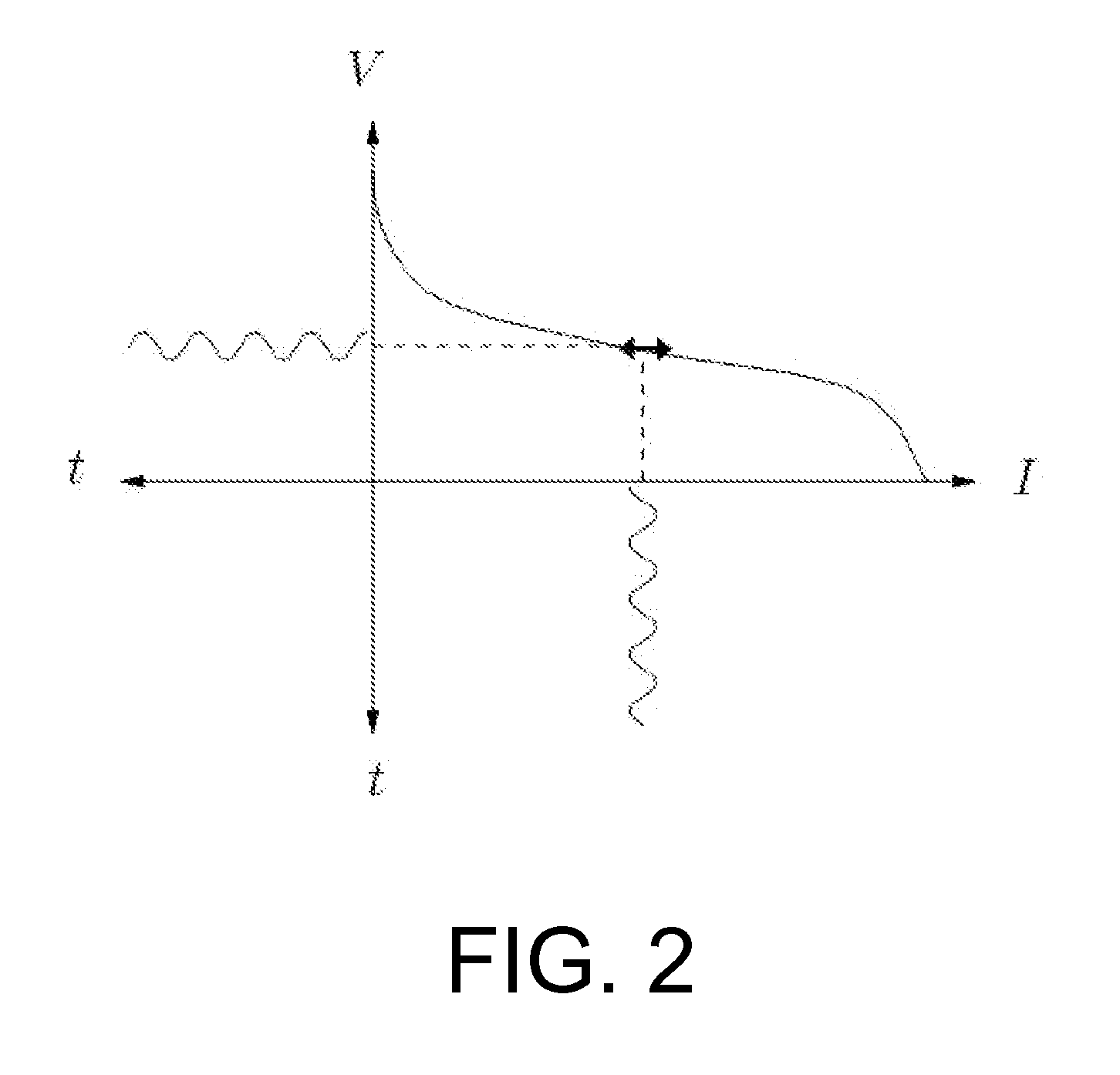Method for characterizing an electrical system by impedance spectroscopy
a technology of impedance spectroscopy and electrical system, applied in the field of electrical systems, can solve the problems of change in the stability condition inability to exploit the impedance measurement, and inability to verify hypotheses, so as to achieve simple and quick verification of the stability of the electrical system, and the effect of simple and quick verification of the electrical system
- Summary
- Abstract
- Description
- Claims
- Application Information
AI Technical Summary
Benefits of technology
Problems solved by technology
Method used
Image
Examples
first embodiment
[0067]In the invention, each sub-series is interlaced with all of the other sub-series of said plurality.
[0068]Each sub-series is traveled through by the sequence of perturbations monotonously, in the same direction, preferably from the high frequencies toward the low frequencies.
[0069]Moreover, said plurality of sub-series of frequencies is traveled through monotonously. Monotonous order means that the plurality of sub-series of frequencies is traveled through from sub-series to adjacent sub-series, following an ordered ranking of the sub-series. Preferably, said sub-series are ranked according to decreasing order of the maximum frequency of each sub-series.
[0070]As an example, and as illustrated by FIGS. 3A and 3B, the primary series A of frequencies to be scanned is from 2 Hz to 10 kHz, and includes 12 frequencies. Thus, the series A is: A={10 kHz, 5 kHz, 2 kHz, 1 kHz, 500 Hz, 200 Hz, 100 Hz, 50 Hz, 20 Hz, 10 Hz, 5 Hz, 2 Hz}.
[0071]Three sub-series A1, A2, A3 are formed from the p...
second embodiment
[0099]The sequence of perturbations scans the sub-series turn by turn, following the decreasing order of the maximum frequencies, as in FIG. 4, which illustrates an example of interlacing of the frequencies for the invention.
[0100]Thus, the sequence of perturbations involves a succession of back and forth movements, while going gradually from the high frequencies towards the low-frequencies.
[0101]As previously described, in case of instability of the cell, a discontinuity in the values of the impedance appears at the overlap areas between the adjacent sub-series.
[0102]This discontinuity can be exploited to diagnose a budding defect, such as for example drainage or engorgement of a fuel cell, and to lead to retroaction on the control-command of the fuel cell.
[0103]For the different embodiments described earlier, the frequencies of each sub-series Ai can be scanned no longer monotonously, but randomly, by said sequence of perturbations.
[0104]Likewise, said plurality of sub-series of f...
PUM
 Login to View More
Login to View More Abstract
Description
Claims
Application Information
 Login to View More
Login to View More - R&D
- Intellectual Property
- Life Sciences
- Materials
- Tech Scout
- Unparalleled Data Quality
- Higher Quality Content
- 60% Fewer Hallucinations
Browse by: Latest US Patents, China's latest patents, Technical Efficacy Thesaurus, Application Domain, Technology Topic, Popular Technical Reports.
© 2025 PatSnap. All rights reserved.Legal|Privacy policy|Modern Slavery Act Transparency Statement|Sitemap|About US| Contact US: help@patsnap.com



